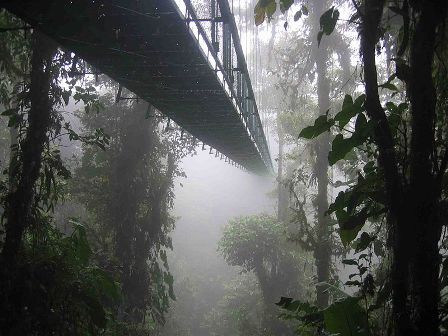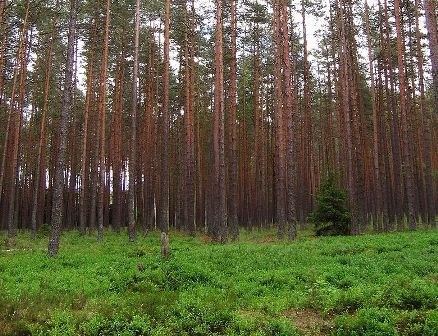Mushroom Magicians
Morels are like the magicians of the mushroom world.
They perform the trick of popping up in one state one day, only
to vanish and reappear in another the next! How do they do
it? Well, like a real magician, they don't reveal their
secrets. It is impossible to know exactly when or where a
false morel will show up, but certain factors like climate and
preferred habitat can help locate them more easily.
The false morel’s
geography is extremely widespread.
It is common throughout the entire continent of Europe, especially in Germany and
Poland.
It is also found throughout Asia, everywhere from Russia to
Indonesia. In North America, it can be found from
Mexico to Alaska, but it is most common in the
Midwest, Pacific Northwest, and the Rockies.
Finally, the false morel can be found in North Africa and the
Middle East regions around the Mediterranean Sea. This particular
species has not been reported in the southern hemisphere.
The
geographic distribution of Gyromitra esculenta makes sense based
on its lifestyle. It shows up in places with moderate temperatures and
plenty of moisture because fungi have no tolerance for very hot, dry climates.
Therefore, as the year goes on, it is seen first in the south then “moves”
north. This explains why it can be found in early
spring in California and in the Rocky Mountains as late as June.
These are forests that grow in the mountains of tropical regions. They are called cloud forests because of the near constant presence of fog, which causes extremely high humidity (above, right). The false morel has only been recorded at elevations above 8,000 feet in these forests. This is because it is much cooler at that altitude than in surrounding lowlands. The moderate temperature combined with the constant
 water
availability make these forests a mushroom paradise. Despite
being found in cloud forests, Gyromitra esculenta
is definitely most abundant in pine
forests in temperate climates like the northern United States
and Europe.
water
availability make these forests a mushroom paradise. Despite
being found in cloud forests, Gyromitra esculenta
is definitely most abundant in pine
forests in temperate climates like the northern United States
and Europe. False morels don’t always need a forest to grow. Specimens have been found on the plains as well as in unique environments like urban yards and near melting snow banks in the mountains. It is unclear why they grow in these specific habitats other than they provide the right type of nutrients for the morel. False morels can occupy diverse habitats because they are well evolved to live in that environment. Visit the adaptations page to learn more about how false morels are fitted to their ecological niche.
Pictures on this page were taken from Wikipedia.com.